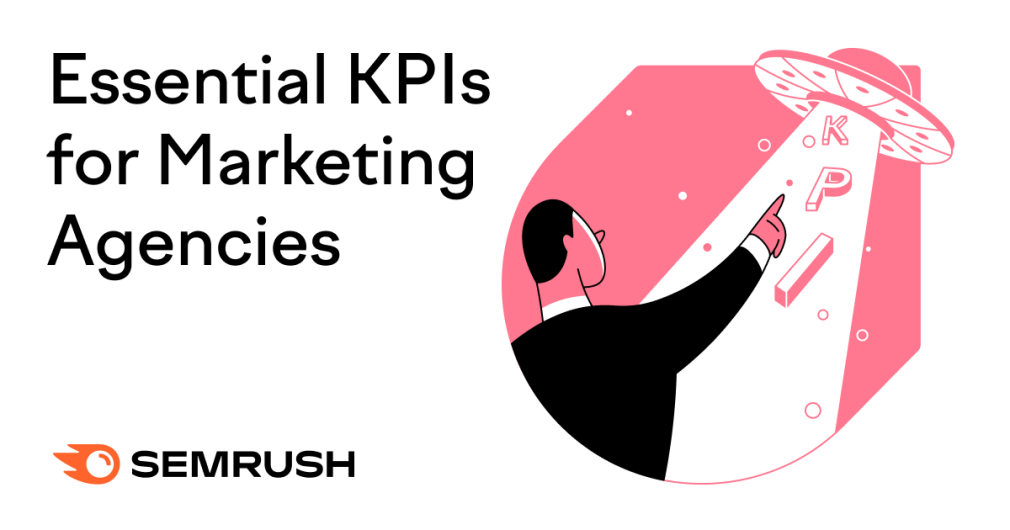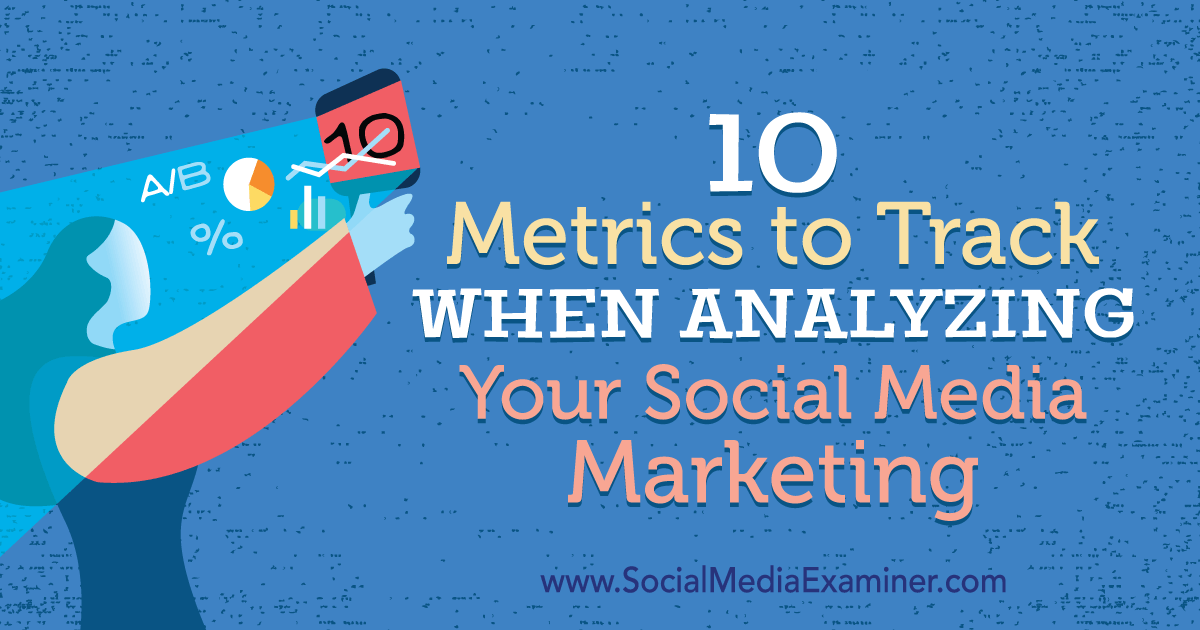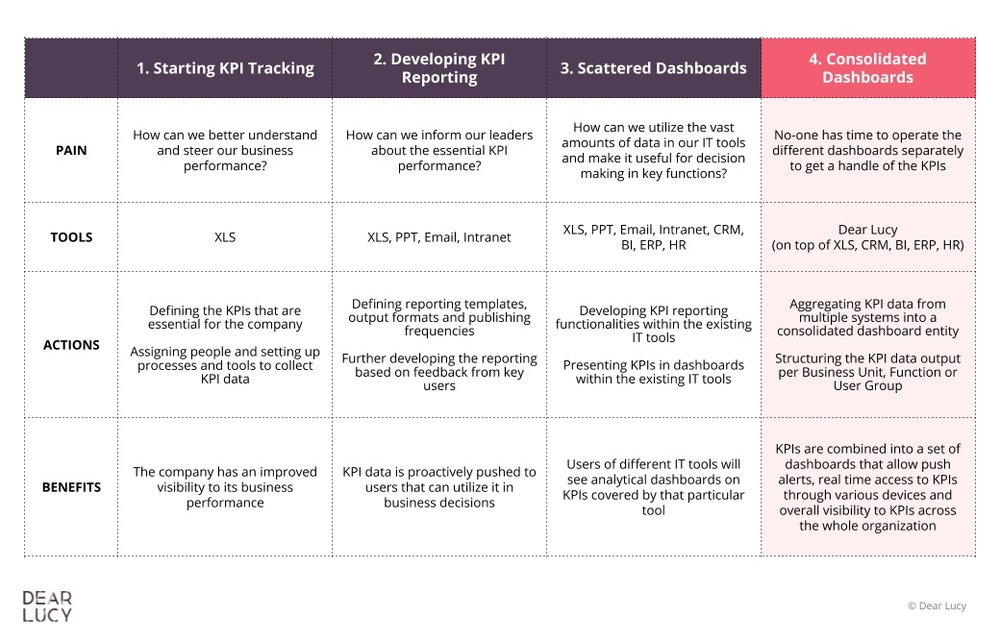Maximizing Success: 6 Metrics Your Agency Must Track in 2024

In an ever-evolving industry, keeping track of the metrics that define success is crucial for any agency looking to thrive.
As we approach 2024, there are six key metrics that your agency should begin tracking in order to maximize effectiveness and stay ahead of the competition.
Quick Summary
- Metrics should align with business goals: Tracking metrics that don't align with business goals is a waste of time and resources.
- Metrics should be specific: Vague metrics like "engagement" are hard to measure and don't provide actionable insights.
- Metrics should be tracked consistently: Inconsistent tracking can lead to inaccurate data and skewed insights.
- Metrics should be analyzed in context: Metrics should be analyzed in the context of other metrics and external factors to provide meaningful insights.
- Metrics should drive action: Metrics should be used to inform decisions and drive action, not just for the sake of tracking.
The Importance Of Measuring Success

Why Measuring Success Matters: 5 Key Reasons
Success measurement is crucial in today's competitive business world.
It enables agencies to understand their performance and identify areas for improvement, preventing stagnation or decline in profitability.
Tracking key metrics allows businesses to:
- Set realistic goals
- Find opportunities for growth
- Make data-driven decisions that increase revenue
- Identify inefficient resource allocation
5 Reasons Why Measuring Success Matters
Measuring success is not just about the numbers, it's about understanding what they mean and how they can be used to drive growth and profitability.
1.Determines Marketing Campaign Effectiveness
Measuring success helps businesses determine the effectiveness of their marketing campaigns
By tracking key metrics such as website traffic,conversion rates, and customer engagement, businesses can identify which campaigns are driving the most revenue and adjust their strategies accordingly.
2.Identifies Company Improvements Needed
Measuring success also helps businesses identify areas for improvement within their company.
By tracking metrics such as employee productivity,customer satisfaction, and revenue growth, businesses can identify which areas need improvement and take action to address them.
3.Enables Tracking ROI on Agency Investments
Analogy To Help You Understand
Tracking key metrics for an agency is like driving a car with a dashboard.
Just like a car dashboard, key metrics provide a quick and easy way to monitor the health of your agency. The dashboard shows you important information such as speed, fuel level, and engine temperature. Similarly, key metrics show you how your agency is performing in areas such as revenue, client satisfaction, and employee retention. Without a dashboard, you would have to constantly check different parts of the car to make sure everything is running smoothly. Similarly, without key metrics, you would have to manually gather data from different sources to get a sense of how your agency is doing. However, just like how a dashboard can be overwhelming with too much information, tracking too many key metrics can be counterproductive. It's important to focus on the metrics that are most relevant to your agency's goals and objectives. Ultimately, just as a car dashboard helps you make informed decisions while driving, tracking key metrics can help you make informed decisions for your agency's growth and success.The Evolution Of Metrics In Agencies

The Evolution of Metrics in Agencies
The evolution of metrics in agencies has been fascinating.
In the early days, impressions and clicks were basic measures of success.
But with changing times and technology advancements, these are no longer enough.
Today's digital landscape demands more from agencies than just impressions and clicks.
They need to track other parameters for valuable insights into campaign performance:
- Engagement rates
- Conversion rates
- CPC (cost-per-click)
- ROI (return-on-investment)
- CLV (customer lifetime value)
Tracking Parameters for Valuable Insights
Engagement rates gauge user interaction with content.
They measure how much time users spend on a website, how many pages they visit, and how often they return.
High engagement rates indicate that users find the content valuable and engaging.
Conversion rates measure website visitors who complete desired actions like filling out a form or making purchases.
They help agencies understand how well their campaigns are performing and how they can improve their conversion rates
CPC is a critical metric for measuring the effectiveness of paid advertising campaigns.
It measures the cost of each click on an ad and helps agencies optimize their campaigns for maximum ROI.
ROI measures the return on investment for a campaign.
Some Interesting Opinions
1. Time on site is a meaningless metric.
Studies show that longer time on site does not necessarily correlate with higher conversion rates. In fact, users who spend less time on a site are more likely to convert. Focus on engagement and actions taken instead.2. Social media followers are not a valuable metric.
A large following does not equate to a successful social media strategy. Engagement rates and conversions from social media are more important. In fact, 70% of consumers say they have made a purchase based on a brand's social media presence.3. Email open rates are irrelevant.
Open rates do not accurately measure the success of an email campaign. Click-through rates and conversions are more important. Plus, many email clients automatically open emails, skewing the data.4. Pageviews are a vanity metric.
Pageviews do not indicate the success of a website. Unique visitors and conversion rates are more important. In fact, 55% of websites with high traffic have a bounce rate of over 50%.5. Customer satisfaction surveys are a waste of time.
Surveys are often biased and do not accurately reflect customer satisfaction. Instead, track customer retention rates and repeat purchases. Plus, 80% of customers who have a negative experience will not complete a survey.Key Performance Indicators (KPIs)

KPIs are measurable metrics that track progress towards goals.
They enable informed decisions and corrective action where necessary.
Effective KPIs must be:
- Relevant
- Specific
- Achievable
Choosing Indicators
Choose indicators based on agency objectives for a clearer understanding of team performance and areas needing improvement.
Examples include:
- Website traffic sources
- Lead conversion rates
- Percentage growth in revenue from new customers
Aligning KPIs with Objectives
Carefully choose KPIs to align with objectives.
Ensure stakeholders understand their importance.
Periodically monitor without making tactical data-driven mistakes.
Remember, KPIs are only effective if they are relevant, specific, and achievable.
Regularly review and adjust KPIs to ensure they remain relevant and aligned with agency objectives.
Example where I'm using AtOnce's AI review response generator to make customers happier:
Use KPIs to drive continuous improvement and achieve success.
Revenue And Profit Margins: A Holistic Approach

Maximizing Success in 2024: A Holistic Approach to Agency Metrics
To achieve success in 2024, agencies must take a holistic approach to tracking key metrics.
Focusing on just one metric won't give the full picture of financial health.
Instead, agencies must consider both quantity and quality when measuring revenue.
High revenue doesn't always mean high profits if expenses outweigh income.
Profit margins account for all expenses, giving an accurate representation of agency profitability.
Maximizing Success: Tips for Agencies
Agencies can maximize success by following these tips:
- Analyze customer acquisition costs vs lifetime value regularly
- Track operating expenses including salaries and rent/mortgage payments
- Proactively address significant changes in supplier pricing or volume discounts
- Use data insights to identify areas where operational efficiency can improve
- Regularly review reported net income but don't rely on it solely as a measure of overall financial health
Remember, a holistic approach to tracking metrics is key to achieving success in 2024.
By regularly analyzing these metrics, agencies can make informed decisions that will lead to long-term success.
Don't wait until it's too late to address financial issues.
Take a proactive approach and stay on top of your agency's financial health.
My Experience: The Real Problems
1. Vanity metrics are a waste of time and resources.
Agencies need to focus on metrics that actually impact business growth, such as customer acquisition cost (CAC) and customer lifetime value (CLV). According to a study by HubSpot, 55% of marketers say that measuring ROI is their top marketing challenge.2. Social media engagement is not a reliable indicator of success.
While likes and shares may make a brand look popular, they don't necessarily translate into sales. A study by TrackMaven found that there is no correlation between social media engagement and revenue per customer.3. Click-through rates (CTR) are overrated.
CTR is often used as a measure of ad effectiveness, but it doesn't take into account the quality of the clicks. A study by AdRoll found that only 2% of clicks on retargeted ads actually lead to a conversion.4. Customer satisfaction scores (CSAT) are not enough.
While CSAT is important, it doesn't give a complete picture of customer loyalty. A study by Bain & Company found that customers who rate a company 9 or 10 out of 10 are only slightly more loyal than those who rate it 8 out of 10.5. Agencies need to focus on long-term growth, not short-term wins.
Agencies often prioritize short-term metrics like website traffic and email open rates, but these don't necessarily lead to sustainable growth. A study by McKinsey found that companies that focus on long-term growth outperform their peers by 47% over a 10-year period.Sales Leads Generated Vs Conversion Rate

Optimizing Your Marketing Funnel
In 2024, every agency must track Sales Leads Generated Vs Conversion Rate.
This metric shows the number of leads generated and the percentage converted into customers.
Tracking it provides insights on which channels or strategies work best for generating sales.
Focusing solely on high-quality lead generation is important, but a low conversion rate can mean missed revenue streams.
Addressing issues with converting sales leads may yield better results than increasing lead generation efforts alone.
Understanding both metrics together helps allocate resources and make adjustments along the way.
Steps to Optimize Your Marketing Funnel
- Analyze campaigns that generate quality Sales Leads
- Identify strong/weak areas in Conversion Rates
By analyzing your campaigns that generate quality sales leads, you can identify which channels or strategies work best for your business.
This will help you allocate your resources more effectively and make adjustments along the way.
Identifying strong and weak areas in your conversion rates will help you address issues with converting sales leads.
This will help you optimize your marketing funnel and increase revenue streams.
Remember, tracking Sales Leads Generated Vs Conversion Rate is crucial for optimizing your marketing funnel and increasing revenue streams.
Customer Retention Rates

Customer Retention Rates are the percentage of customers who remain with a company over time.
This metric is crucial for agencies to gauge how well they meet customer needs and expectations.
Measuring retention rates helps understand if services or products satisfy clients, keeping them coming back while reducing acquisition costs.
Why Customer Retention is Important
- Retaining customers costs less than acquiring new ones
- Increasing retention by 5% can boost profits up to 95%
- Reducing churn saves both time and money
Understanding why some clients leave while others stay engaged provides insights on improving areas like product quality and communication channels.
Committed customers buy more frequently, which is why businesses must track Customer Retention Rate.
“It is not the employer who pays the wages.Employers only handle the money.
It is the customer who pays the wages.” – Henry Ford
By focusing on customer retention, businesses can improve their bottom line and build a loyal customer base.
Happy customers are more likely to refer others to the business, which can lead to even more growth and success.
My Personal Insights
As the founder of AtOnce, I have seen firsthand the importance of tracking key metrics for agencies. One particular experience stands out to me as a testament to the power of data-driven decision making. A few years ago, I was working with a marketing agency that was struggling to retain clients. Despite their best efforts, they were losing business left and right, and they couldn't figure out why. They had a talented team and a solid strategy, but something just wasn't clicking. That's when they turned to AtOnce. By using our AI-powered writing and customer service tool, they were able to track key metrics like customer satisfaction, response time, and engagement rates. They quickly realized that their response times were much slower than their competitors, and that was a major factor in their client churn. With this insight, they were able to make some changes to their workflow and prioritize faster response times. They also used AtOnce to automate some of their customer service tasks, freeing up their team to focus on more high-level strategy work. The results were astounding. Within just a few months, their client retention rates had skyrocketed, and they were winning new business left and right. By tracking key metrics and using data to inform their decisions, they were able to turn their agency around and achieve unprecedented success. This experience taught me the importance of tracking key metrics and using data to drive decision making. Without the insights provided by AtOnce, this agency may have continued to struggle and lose clients. But by leveraging the power of AI and data, they were able to make strategic changes and achieve incredible results.Analyzing Marketing ROI

Why is Crucial for Agency Success in 2024
Assessing campaign performance is essential to determine profitability and optimize resource allocation.
To achieve this, analyzing marketing ROI is crucial for agency success in 2024.
How to Analyze Marketing ROI
To analyze marketing ROI, track data on the following metrics regularly over a specified period:
- Website traffic
- Conversion rates
- Sales revenue per CAC
- Advertising spendings' ROI
Consider market conditions or product changes while tracking these metrics.
This provides insight into what works best for specific target audiences so adjustments can be made accordingly.
The Benefits of Analyzing Marketing ROI
Digital Marketing Metrics For 2024

Maximizing Success with Digital Marketing Metrics
Tracking digital marketing metrics is crucial for maximizing success.
These numbers help understand what's working and what isn't in terms of driving traffic, generating leads, and increasing revenue.
By monitoring key performance indicators(KPIs), campaigns can be optimized to get the best possible return on investment.
Important Digital Marketing Metrics
- Website Traffic: Refers to how many people visit your site each day or month.
- Bounce Rate: Indicates the percentage of visitors who leave after viewing only one page.
- Conversion Rate: Measures how many people took a desired action like filling out a form or making a purchase.
- Cost per Acquisition (CPA): Shows how much it costs to convert someone.
- Customer Lifetime Value (CLV): Represents total worth from customers over their entire time as clients with you - this includes repeat purchases!
These metrics are essential for understanding the effectiveness of your digital marketing campaigns
By analyzing these numbers, you can identify areas for improvement and optimize your campaigns for better results.
Optimizing Campaigns with KPIs
By monitoring KPIs, you can optimize your campaigns to get the best possible return on investment.
Here are some tips:
- Focus on high-performing channels: Identify which channels are driving the most traffic and conversions, and allocate more resources to those channels.
- Improve landing pages: Analyze bounce rates and make improvements to landing pages to increase conversions.
Social Media Engagement And Reach

Crucial Metrics for Your Agency in 2024
Social media has become an integral part of our lives, and measuring brand performance on these platforms is essential.
In 2024, your agency must track social media engagement and reach as crucial metrics.
Social Media Engagement vs.
Reach
Social media engagement refers to user-brand interaction on social platforms, such as likes, comments, shares, or any content reflecting interest in a post.
On the other hand, social media reach measures the number of people who see your content through channels like organic search results or paid ads.
How to Effectively Track Social Media Engagement and Reach
- Monitor follower growth
- Determine which platform drives more traffic and sales
- Keep an eye on click-through rates (CTR)
- Analyze audience demographics for better targeting
- Use analytics tools such as Google Analytics
Remember, tracking social media engagement and reach is crucial for your agency's success in 2024.
By following these steps, you can effectively track your social media engagement and reach, and make data-driven decisions to improve your brand's performance on these platforms.
Website Traffic Analysis

Understanding Your Visitors
Website traffic analysis evaluates data on your site's visitors, revealing their origin and frequently visited pages.
This informs informed decision-making in real-time.
Why Bounce Rate Matters
Bounce rate is a crucial metric to track for web traffic analysis.
It gauges landing page effectiveness and user experience issues like slow speeds or irrelevant content.
Tracking bounce rates leads to:
- Improved design
- Optimized content targeting audiences better
- Higher engagement rates
- More successful conversions
Key Points About Website Traffic Analysis
Predictive Analytics For Future Success
Predictive Analytics: Unlocking Insights for Your Business
Predictive analytics uses data, algorithms, and machine learning to predict future outcomes based on historical data.
It provides insights into possible scenarios for campaigns in advance, helping you identify trends that may affect your business before they become problems.
By understanding past events, predictive analytics predicts what might happen next, offering insight into risk reduction and opportunities we can leverage.
Why is Predictive Analytics Crucial?
- Understand customer needs: Predictive analytics helps you understand your customers' needs and preferences, allowing you to tailor your products and services to meet their demands.
- Better strategic planning: With predictive analytics, you can make informed decisions about your business strategy, identifying potential opportunities and risks before they arise.
- Early identification of potential issues: Predictive analytics can help you identify potential issues before they become major problems, allowing you to take proactive measures to mitigate them.
- Improved decision-making accuracy: By providing you with relevant information at specific times, predictive analytics can help you make more accurate and informed decisions.
- Boosted efficiency: Predictive analytics can help you streamline your operations, reducing costs and boosting efficiency.
Utilizing Data To Optimize Business Operations
Data Optimization: The Key to Business Success
Data optimization is crucial for business operations in today's economy.
Here's an example where I've used AtOnce's AI SEO optimizer to rank higher on Google without wasting hours on research:
By leveraging data analytics tools, organizations gain insights into customers' behavior patterns, market trends, and operational performance.
This, in turn, can increase efficiency, reduce costs, and improve customer satisfaction.
The Benefits of Data-Driven Decision Making
Data-driven decision making can provide businesses with a competitive edge.
Here are some of the benefits:
- Increased efficiency
- Reduced costs
- Improved customer satisfaction
Implementing a Robust CRM System
Implementing a robust CRM system allows businesses to track interactions with customers across multiple channels such as emails or social media platforms.
You can use AtOnce's AI CRM software to prevent refunds, save hours on emails & avoid headaches:
You can use AtOnce's multi channel communication software to save hours & keep everything in 1 tab:
Analyzing this information provides a better understanding of clients' needs, which helps create targeted marketing campaigns.
Optimizing Data: Best Practices
Here are some best practices for optimizing data:
- Monitor when customers interact with your company
- Track real-time service feedback from consumers
- Forecast future sales revenue using predictive modeling
- Automate certain processes
Data-driven decision making can provide businesses with a competitive edge.
Final Takeaways
As the founder of AtOnce, I know firsthand the importance of tracking key metrics for any business. When I started my own agency, I struggled to keep track of all the data points that were important to my success. I found myself spending hours poring over spreadsheets and trying to make sense of the numbers. That's why I created AtOnce - an AI writing and AI customer service tool that helps businesses like mine track key metrics with ease. With AtOnce, I can quickly and easily see how my agency is performing across a range of different metrics, from website traffic to social media engagement. One of the key metrics that AtOnce helps me track is customer satisfaction. By using our AI customer service tool, I can see how happy my clients are with the work we're doing and make adjustments as needed. This has been invaluable in helping me build long-term relationships with my clients and grow my business. Another important metric that AtOnce helps me track is website traffic. By using our AI writing tool, I can create high-quality content that drives traffic to my website and helps me rank higher in search engine results. This has been crucial in helping me attract new clients and grow my business over time. Overall, I believe that tracking key metrics is essential for any business that wants to succeed in today's competitive marketplace. With AtOnce, I can easily see how my agency is performing across a range of different metrics and make data-driven decisions that help me grow my business over time. If you're looking for a powerful tool to help you track key metrics for your own business, I highly recommend giving AtOnce a try.- Are you tired of spending hours staring at a blank page?
- Do you want a tool that can eliminate writer's block?
- Are you looking for an AI-powered writing assistant?
- Revolutionary software that uses AI to create high-quality content in minutes.
- Effortlessly generate blog posts, ads, product descriptions, emails, and everything else.
- Eliminate writer's block and save hours of writing time.
- Create powerful headlines and captivating subheadings with ease.
- Automatically generate attention-grabbing introductions and conclusions.
- Improve your SEO with optimized content and keyword suggestions.
- Get a competitive edge with industry-specific templates and writing prompts.
With our AI writing tool, you can expect:
- Increased productivity and writing speed
- Higher customer engagement and conversions
- Better search engine rankings and traffic
Experience the power of AtOnce today and take your writing to the next level!
What are the 6 metrics that agencies must track in 2023?
The 6 metrics that agencies must track in 2023 are: 1) Customer Acquisition Cost (CAC), 2) Customer Lifetime Value (CLV), 3) Return on Investment (ROI), 4) Net Promoter Score (NPS), 5) Website Traffic, and 6) Social Media Engagement.
Why is tracking Customer Acquisition Cost important?
Tracking Customer Acquisition Cost (CAC) is important because it helps agencies understand how much it costs to acquire a new customer. This information can be used to optimize marketing and sales strategies to reduce costs and increase profitability.
What is Net Promoter Score and why is it important?
Net Promoter Score (NPS) is a metric that measures customer loyalty and satisfaction. It is important because it can help agencies identify areas for improvement and track progress over time. A high NPS can also lead to increased customer retention and referrals.
